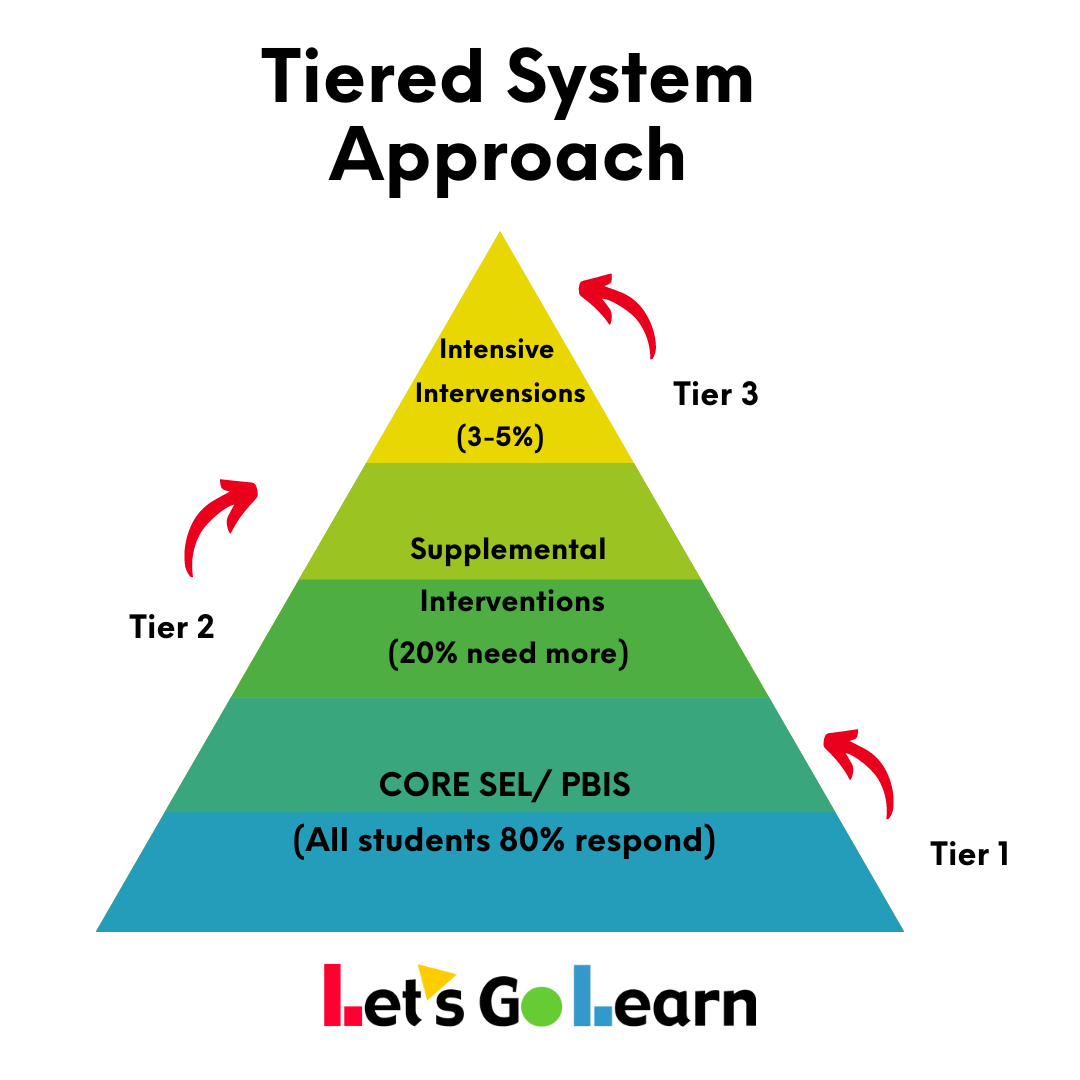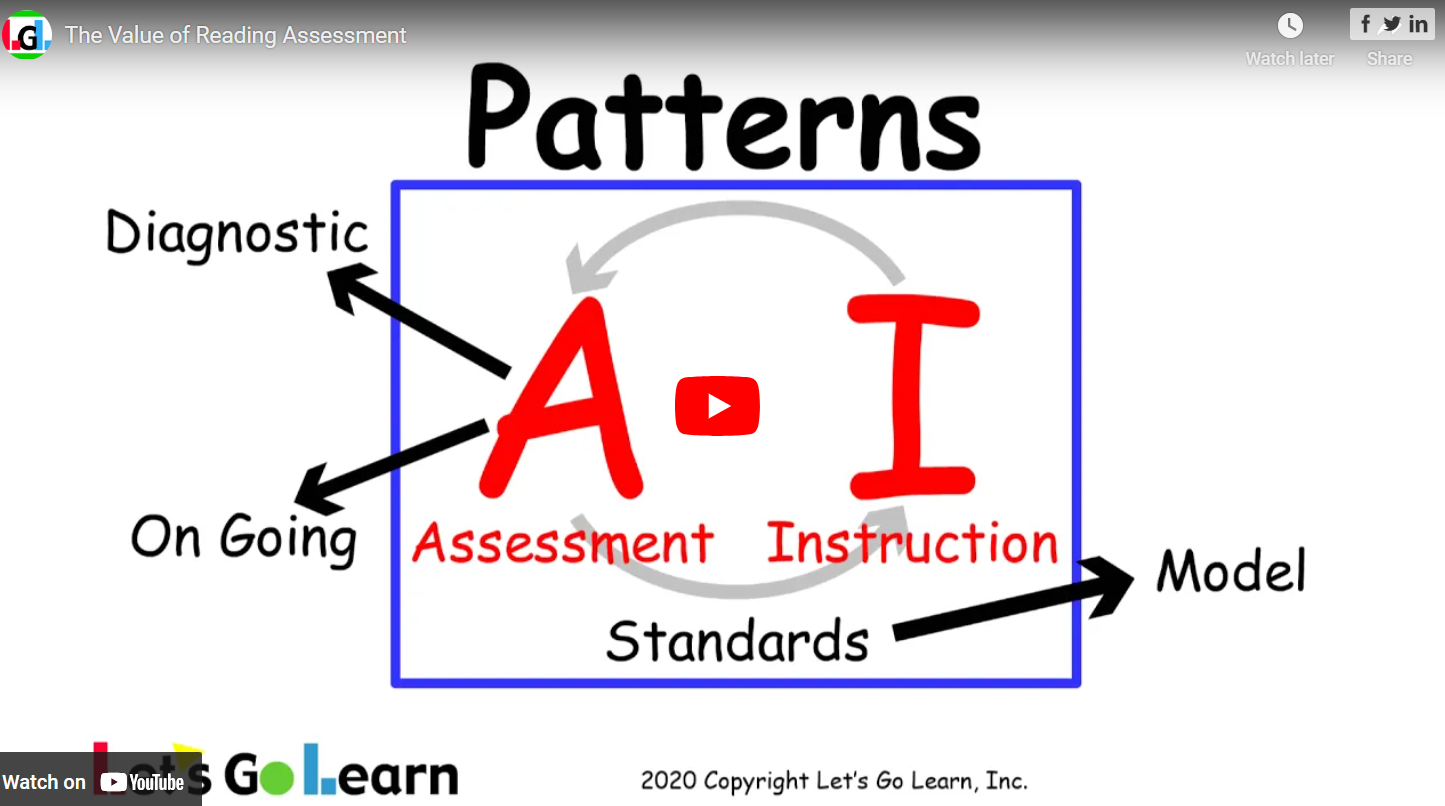Reading Intervention Strategies
Studies show that reading interventions can be effective, particularly when implemented early. The National Center for Education Statistics (NCES) reports that interventions in grades 1-3 had positive impacts on reading skills, especially for word recognition and fluency https://nces.ed.gov/pubsearch/index.asp?HasSearched=1&searchcat2=subjectindex&L1=229&L2=0. Reading intervention is a targeted approach to instruction that aims to accelerate the reading skills of students who are below grade level. The purpose of reading intervention is to provide these struggling readers with the necessary support to improve their reading abilities and catch up with their peers.
To effectively intervene, reading intervention programs use a variety of methods and approaches tailored to meet the specific needs of each student. These methods may include explicit phonics instruction, guided reading, close reading, and comprehension strategies. The focus of reading intervention is to bridge the gap between a student’s current reading level and grade-level expectations. By providing targeted instruction, educators can help students develop the necessary skills, such as decoding, fluency, vocabulary, and comprehension, that are essential for successful reading. The ultimate goal of reading intervention is to boost students’ confidence, engagement, and overall reading proficiency.
Importance of Reading Intervention Strategies In Promoting Literacy
Reading intervention plays a crucial role in promoting literacy by offering intensive targeted instruction to students reading below grade level. It is an effective approach that seeks to accelerate the reading skills of struggling learners and provide them with the necessary support to reach grade-level expectations.
One key aspect of reading intervention is its incorporation within the Multi-Tiered System of Supports (MTSS) framework. This framework allows for the implementation of reading intervention at different tiers, addressing the needs of students at varying levels of difficulty. Tier 1 provides universal instruction to all students, Tier 2 offers targeted intervention to a smaller group of students who require additional support, and Tier 3 provides intensive intervention for students with the greatest needs.
Reading intervention is vital for striving readers in grades 4 and above. Many students struggle with reading. In the US, only around one-third of fourth graders read proficiently (https://www.readabilitytutor.com/faqs/).

This means that a significant portion of students could benefit from reading intervention. At this stage, students are expected to have developed more advanced reading skills, and those still struggling may face significant challenges in accessing their grade-level curriculum. The individual instructional needs of these students can be addressed through reading intervention, which provides targeted strategies, explicit instruction, and ongoing support.
Similarly, reading intervention plays a crucial role in supporting English Language Learners (ELLs) in their journey towards literacy. These students often face additional hurdles due to language barriers, and reading intervention can provide them with targeted instruction in phonics, vocabulary, and comprehension to help develop their reading skills. Through its implementation within the MTSS framework, it ensures that students’ individual instructional needs are addressed effectively, enabling them to accelerate their reading skills and ultimately achieve grade-level expectations.
Phonemic Awareness and Phonological Awareness
Phonemic awareness and phonological awareness are both crucial components in the development of reading skills. These terms refer to the ability to identify and manipulate the smallest units of sound in spoken language, known as phonemes.
Phonological awareness encompasses a broader understanding of the sound structure of language. It includes skills such as identifying and producing rhyming words, recognizing and manipulating syllables, and segmenting words into individual sounds.

This awareness of the sound structure lays the foundation for phonemic awareness. Phonemic awareness specifically focuses on the ability to recognize and manipulate individual phonemes. Phonemes are the distinct sounds that make up words and can be represented by letters or groups of letters. This skill is essential in learning to read because it allows children to understand that words are composed of individual sounds that can be blended or manipulated to form new words.
Phonemic awareness and phonics are closely connected. Phonics is the understanding of the relationship between letters and sounds. Phonemic awareness is a prerequisite for phonics instruction because it helps develop the ability to hear and identify letter sounds. As children progress in their phonemic awareness skills, they can begin blending individual sounds to form words. This blending skill is fundamental to decoding words while reading. By identifying and manipulating the smallest units of sound in spoken language, children can develop the necessary skills to read and decode words accurately. Phonemic awareness provides the groundwork for phonics instruction, enabling children to make connections between letter sounds and written words.
Explanation of Phonemic Awareness
Phonemic awareness is the understanding that words are made up of individual sounds, called phonemes. It is the ability to recognize and manipulate these phonemes in spoken words, without reliance on printed text. Developing phonemic awareness helps children break down words into their constituent sounds and blend sounds to form words.
Oral activities are central to developing phonemic awareness. Rhyming, for example, involves recognizing and generating words that share the same ending sounds.

This activity helps children develop an ear for the sounds of words, as well as the ability to manipulate those sounds. Segmenting is another important oral activity, where children break words apart into individual phonemes. This helps them understand that words consist of smaller sound units. Blending involves the opposite process, where children combine individual phonemes to form complete words.
By engaging in these oral activities, children develop the necessary skills for phonemic awareness, which in turn strengthens their reading abilities. Phonemic awareness is a vital precursor to phonics, the understanding that letters represent sounds. When children can manipulate and identify individual sounds in spoken language, they are better equipped to decode printed words and develop strong reading skills.
Importance of Phonemic Awareness In Reading Development
Phonemic awareness, a crucial aspect of literacy development, plays a fundamental role in a child’s ability to read and comprehend written language. This essential skill involves recognizing and manipulating the individual sounds or phonemes in spoken words. Through various activities, such as identifying, categorizing, blending, and segmenting sounds, phonemic awareness helps children establish strong connections between letters and sounds, laying a solid foundation for their reading skills. Research suggests that phonemic awareness is a significant predictor of children’s future reading abilities, as it directly influences their phonics skills and word recognition.

Definition of Explicit Instruction
Explicit instruction is a teaching approach that provides clear, direct guidance to learners. It involves explicitly teaching the skills and knowledge that students need, breaking down complex tasks into smaller, more manageable steps, and providing ongoing opportunities for practice and reinforcement. The importance of explicit instruction in addressing the needs of struggling readers cannot be overstated. These students often struggle to obtain the necessary literacy skills due to various factors such as learning disabilities, language barriers, or limited prior knowledge. Explicit instruction helps bridge these gaps by offering a straightforward approach to learning.
By providing clear and direct guidance, explicit instruction ensures that struggling readers understand their learning goals from the start. This clarity helps them to focus on the specific skills they need to develop, increasing their chances of success. With explicit instruction, students receive step-by-step demonstrations, explanations, and modeling of skills, which helps them understand how to apply these skills independently.
Benefits of Explicit Instruction In Reading Intervention
Explicit instruction provides clear and direct instruction, leaving no room for confusion or misunderstanding. It breaks down reading skills into small, manageable tasks, making it easier for struggling readers to grasp important concepts. By explicitly teaching phonics, decoding, fluency, and comprehension strategies, this approach equips struggling readers with the necessary tools to become more proficient readers.
Secondly, explicit instruction enhances the engagement of struggling readers. The explicit nature of this instruction helps children understand why certain strategies or techniques are employed. When the purpose and importance of each reading skill are made explicit, struggling readers become motivated to apply these skills independently. This not only helps improve their literacy skills but also boosts their confidence and self-esteem.
Explicit instruction allows for targeted, individualized support. Educators can identify the specific areas of difficulty for struggling readers and tailor their instruction accordingly. This personalized approach helps struggling readers focus on their specific needs, allowing them to make significant progress in their literacy skills.
Foundational Skills In Reading Intervention
Foundational skills in reading intervention play a crucial role in supporting students who struggle with reading. These skills include phonological awareness, phonics, fluency, vocabulary, and comprehension. By providing targeted and explicit instruction in these foundational skills, educators can help students develop the necessary building blocks to become proficient readers. Foundational skills lay the groundwork for successful reading, enabling students to decode words accurately, understand their meaning, and make connections between the text and their prior knowledge. With a strong foundation in these skills, students are better equipped to access more advanced reading material and engage in higher-level thinking.

Phonics Instruction
Phonics instruction is a key component in teaching children how to read. It provides them with the foundational knowledge and skills needed to decode and understand written language. Phonics instruction focuses on the relationship between the sounds of spoken language and the letters or groups of letters that represent those sounds.
There are different approaches to phonics instruction that educators can utilize. One is the rule-based approach, which emphasizes teaching students explicit phonics rules and patterns. Students learn to apply these rules when decoding words and can use them to make predictions about unfamiliar words. Rule-based instruction often involves activities such as word sorts, where students categorize words according to specific spelling patterns.
Another approach to phonics instruction is the synthetic approach, which focuses on teaching students individual letter sounds and then blending them to form words. This approach typically starts with teaching students the most common letter sounds and then gradually introduces more complex letter combinations. Activities such as making words, where students manipulate letter tiles or cards to form different words, are commonly used in synthetic instruction.
The analogical approach to phonics instruction is based on the idea that students can use their knowledge of word families or “chunks” to decode and spell words. Rather than focusing on individual letter sounds, students learn to recognize common spelling patterns and apply them to new words. Activities like guessing the covered word, where students use context clues and word patterns to guess a hidden word, are often used in analogical instruction.
Overall, phonics instruction is a vital part of helping students become proficient readers. By using rule-based, synthetic, and analogical approaches, educators can provide students with the tools they need to decode and understand written language.
Importance Of Teaching Phonics In Reading Intervention Programs
Teaching phonics is essential for several reasons, including that it helps children decode words, improve their spelling and writing abilities, enhance their reading fluency, and strengthen their comprehension skills. By understanding the importance of phonics instruction in reading intervention programs, educators can effectively support struggling readers and provide them with the necessary tools to become proficient readers who can navigate texts independently and confidently.
Oral Reading
Oral reading plays a crucial role in early childhood development and is extremely useful in the classroom. It is essential to foster language skills, vocabulary development, and overall literacy. By engaging young children in oral reading activities, teachers create opportunities for them to learn new words, improve pronunciation, and gain confidence in their ability to communicate effectively.
In the classroom, oral reading not only enhances a child’s understanding of language but also improves comprehension skills. When students hear a story or text being read aloud, they have the opportunity to listen to and process the information in a meaningful way.

This helps them connect spoken words and their meanings, allowing them to comprehend and retain the content more effectively. Hearing a story read with proper pacing, expressions, and intonation makes it easier for children to identify key ideas, follow the plot, and grasp the underlying ideas or themes. Encouraging children to read aloud themselves can significantly enhance their fluency. Regular oral reading exercises allow students to practice their pronunciation, refine their enunciation, and develop a natural rhythm while speaking. This improves their overall communication skills and boosts their confidence in expressing themselves. It also provides an opportunity for the teacher to observe and provide constructive feedback to enhance their fluency further.
Strategies For Improving Oral Reading Skills
Several evidence-based reading intervention strategies have proven to be effective in improving oral reading skills. One such strategy is repeated reading, where students read a passage multiple times to increase their reading fluency. This can be implemented by selecting a short text that is at the appropriate reading level for the struggling reader. The student can then read the passage several times, with the teacher providing feedback and support as necessary. This strategy can be incorporated into the school schedule by dedicating a specific time each day for repeated reading practice.
Another effective strategy is guided oral reading, where the teacher reads a text aloud while students follow along and then take turns reading sections of the text themselves. This allows the struggling reader to practice oral reading skills with support and modeling from the teacher. To effectively address the needs of struggling readers and best utilize the allocated time in the school schedule, guided oral reading can be implemented during small-group instruction or as part of a reading intervention program.
Overall, these evidence-based reading intervention strategies can be implemented to address the needs of struggling readers while making effective use of the school schedule. By incorporating repeated reading, guided oral reading, and oral language development into daily instruction, teachers can support struggling readers in improving their oral reading skills.
Struggling Reader?
Why Let’s Go Learn?
Let’s Go Learn is a leading educational technology company that provides personalized learning solutions for students of all abilities. With a mission to empower every child to achieve academic success, Let’s Go Learn offers a wide range of assessments, instructional tools, and data-driven reports to support educators and students in their educational journeys. Whether students need additional support in a specific subject or enrichment activities to further their learning, Let’s Go Learn offers a comprehensive suite of resources to address their individual needs. Through an adaptive and interactive platform, Let’s Go Learn ensures that all students receive targeted instruction tailored to their unique learning style and pace. With a research-based approach and a commitment to continuous improvement, LGL aims to make education more accessible, engaging, and effective for all learners.
Explanation Of Let’s Go Learn As A Personalized Learning Solution
This online program combines the power of online diagnostics, prescriptive services, and assessments to create a tailored learning experience for each learner. One of the key features of LGL is its online diagnostics, which allow educators to assess the individual needs and abilities of students. These diagnostics collect insightful data about a student’s current knowledge and skill levels, providing valuable insights for educators.
Based on the results of these assessments, LGL offers prescriptive services to address specific areas of improvement. This personalized approach allows educators to create targeted interventions and individualized learning plans for students. By focusing on areas that need improvement, LGL ensures that students receive the support they need to succeed.
LGL also offers a wide range of assessments that cover various subject areas and grade levels. These assessments provide educators with detailed information about a student’s progress and growth, enabling them to make data-driven instructional decisions.
Benefits of Using Let’s Go Learn for Reading Intervention
Let’s Go Learn offers numerous benefits for reading intervention that set it apart from other programs. First, Let’s Go Learn’s diagnostic assessments are renowned for their accuracy and depth. These assessments evaluate a student’s reading skills across various dimensions, providing detailed information on strengths and areas for improvement. This data is crucial in developing personalized learning plans that address each student’s specific needs.
The individualized instruction provided by Let’s Go Learn allows students to receive targeted interventions in the areas they struggle with the most. With instruction tailored to their unique needs, students can make significant progress at their own pace. This personalized learning approach ensures that students are engaged in their learning and receiving the support they need to succeed.
The online reading intervention program comes with an array of features designed to enhance student learning and provide teachers with comprehensive progress monitoring. The program offers real-time progress updates, allowing teachers to assess student growth and adjust interventions accordingly. By utilizing Let’s Go Learn, educators can ensure that their students receive the support they need to develop strong reading skills and achieve academic success.




Leave A Comment